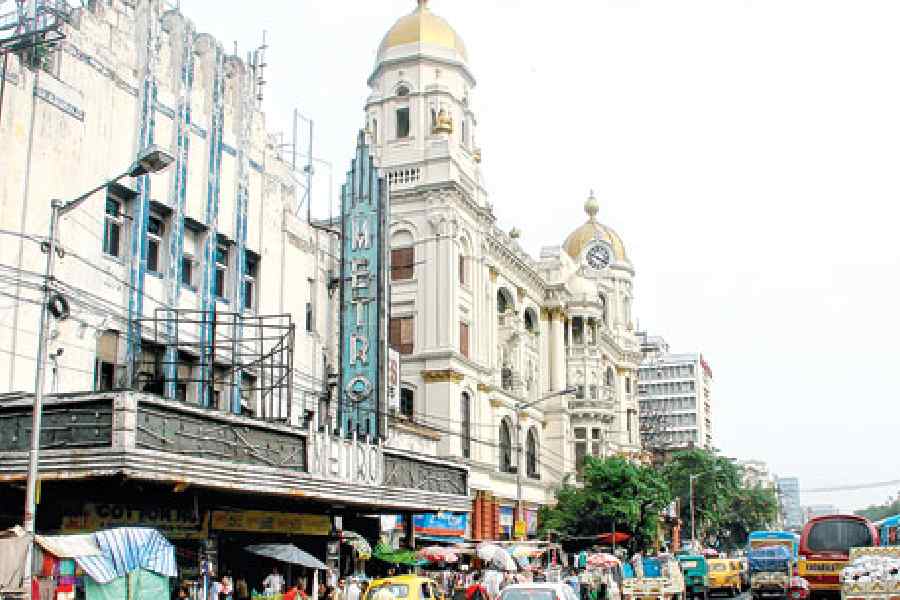One hundred years ago, a sprawling international exhibition was staged in Paris. It was intended to dazzle visitors with all that was new in architecture and design and to establish France as the unassailable arbiter of taste in the Western world. But the style that emerged from L’Exposition Internationale des Arts Décoratifs spread far beyond the Western world. Broadly termed as ‘Art Deco’, this style is defined by bold geometry, rich colours, and lavish ornamentation — much of this was a reaction to the grimness of the First World War, which had just ended. Blending influences from Cubism, Futurism, Bauhaus, and ancient Egyptian, Aztec, and African art, Art Deco exuded aesthetics through sleek symmetry made possible by the emergence of machines.
Calcuttans should be intimately familiar with this architectural style. Even those unaware of what Art Deco is and its history would have seen houses in Calcutta featuring typical Art Deco elements: gracefully curved, semi-circular balconies; tall, vertical bands of glazed panes illuminating stairwells; distinctive, porthole-style windows evocative of ocean liners; and the celebrated sunrise motif elegantly worked into metal grilles and entrance gates. In colonial cities and provinces like Calcutta and Bombay, Art Deco emerged as a rejection of British neoclassicism that then dominated urban architecture. In Calcutta, for instance, the first Art Deco building was the Metro Cinema, which was emblematic of the aspirations of a burgeoning Bengali middle class. In Bombay, too, Art Deco came to denote a bon vivant lifestyle that drew heavily from Western modernism.
That was the past. What about the present? Unlike in Calcutta, where conservators are struggling to preserve the city’s Art Deco heritage, the movement seems to be making a comeback globally with no less than Elon Musk professing his love for it. What should be of interest though is the line of thought that is critical of Art Deco’s aesthetics for being a ruse. Historians have long held that Art Deco’s glitzy distraction is meant to deflect attention from periods of turmoil. The movement, tellingly, flourished during the inter-War decades. Its re-embracement in this day and age is significant as the present chapter in global history can undoubtedly be described as an era of war.
And what about the future of this dazzling, albeit controversial, architectural style? The biggest challenge that Art Deco faces in the 21st century concerns sustainability. Art Deco’s reliance on materials like steel, glass and plastic is more environmentally demanding than those used by indigenous or modern forms of architecture. The focus on ornate details and grand scale could also contribute to higher material usage and greater carbon emissions during construction. In its 100th year of existence, there is certainly a case to make Art Deco more compatible with the needs of the times. This though necessitates an awareness of — and a collective resistance to? — its distracting, escapist allure, unveiling a delicate but inescapable dilemma for Art Deco’s patrons and admirers.

